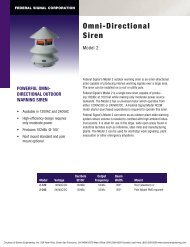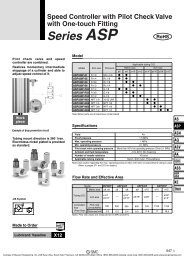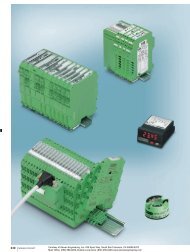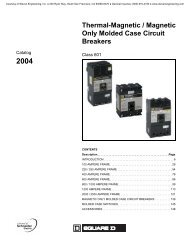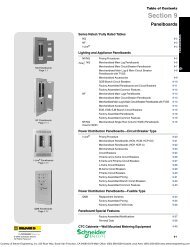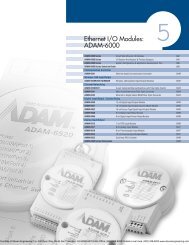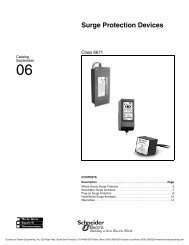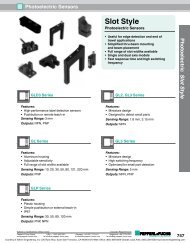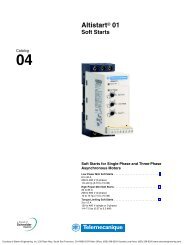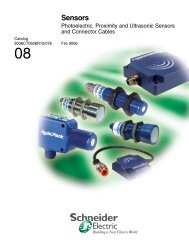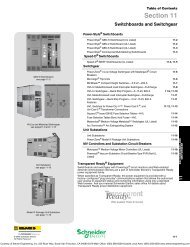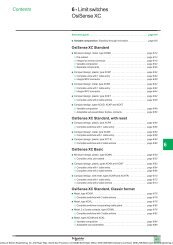resolver decoder specifications - Steven Engineering
resolver decoder specifications - Steven Engineering
resolver decoder specifications - Steven Engineering
You also want an ePaper? Increase the reach of your titles
YUMPU automatically turns print PDFs into web optimized ePapers that Google loves.
Single-Turn vs. Multi-Turn<br />
In a single-turn encoder, the encoder shaft makes one revolution<br />
for one complete cycle of machine operation, where as in<br />
a multi-turn application, the encoder shaft makes more than<br />
one revolutions to complete one machine cycle. Angular rotation<br />
of a crankshaft in a punch press or rotary indexing table<br />
are typical examples of single-turn applications. In linear positioning,<br />
where the encoder shaft makes several turns to complete<br />
total travel, a multi-turn encoder will be required.<br />
Absolute multi-turn encoders and <strong>resolver</strong>s are available with<br />
various built-in gear ratios. Incremental encoders can be used<br />
both in single-turn and multi-turn applications.<br />
Ratiometric vs. Phase Method Decoder<br />
The ratiometric converters can track the shaft movements<br />
faster and can be mounted at a greater distance from <strong>resolver</strong>s<br />
as compared to phase method <strong>decoder</strong>s. They are also more<br />
immune to electrical noise and variations of voltage, frequency,<br />
temperature, etc. Due to the more complex circuitry involved,<br />
the ratiometric converters are usually more expensive than<br />
phase method <strong>decoder</strong>s. In general, for more reliable operation,<br />
the ratiometric converter should be used. In some applications,<br />
where wiring run is short and well shielded, system<br />
speed is slow or slow reacting outputs like electromechanical<br />
relays are used and the installation is relatively free of electrical<br />
noise, the phase method <strong>decoder</strong> may be considered for a cost<br />
effective design.<br />
Built-in vs. Remote Decoder<br />
Usually, <strong>resolver</strong>-to-digital <strong>decoder</strong>s are housed in a separate<br />
enclosure, but <strong>resolver</strong>s with built-in <strong>decoder</strong>s are also available.<br />
The units with <strong>decoder</strong> circuitry packaged inside a<br />
<strong>resolver</strong>-housing combine the ruggedness of a <strong>resolver</strong> with<br />
simplicity of an optical encoder. However, due to the electronics<br />
present in the same housing, the operating temperature<br />
range is considerably reduced as compared to a <strong>resolver</strong> with<br />
separate <strong>decoder</strong>.<br />
The foregoing discussion is helpful in determining as to what<br />
type of transducer will be suitable for a particular application.<br />
But before one can finalize a transducer selection, one needs to<br />
obtain additional mechanical and electrical requirements of the<br />
system. Mechanical parameters to be determined are housing<br />
size, shaft size and loading requirements, mounting style,<br />
NEMA or explosion proof rating needed and system resolution.<br />
Electrical requirements are the power supply voltage and current,<br />
output type (TTL, CMOS, sinking, sourcing, etc), Analog<br />
or Digital outputs, output format (BCD, Binary, or Grey) etc.<br />
SECTION<br />
A<br />
Position Transducers/Sensors<br />
800-TEC-ENGR<br />
www.avg.net<br />
A-7



